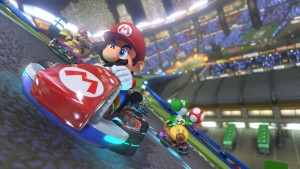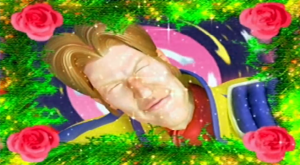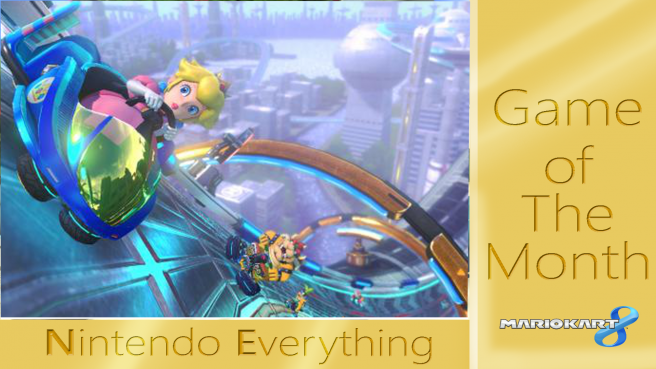[Feature] You Got Boost Power! Why Mario Kart 8 is no F-Zero
It’s safe to say that Mario Kart 8 takes more than a few cues from F-Zero. Nintendo’s other racing franchise that started out on the SNES gets comparatively little love nowadays, but several features from this series have worked their way into the latest Mario Kart. The new racetracks are the most obvious influence, with gravity-defying courses that are straight out of F-Zero (quite literally in the case of some of the DLC), but the new 200cc class brings Mario Kart’s speed just a little bit closer to its older brother. Heck, you can even play as a Mii approximation of Captain Falcon if you can track down his elusive amiibo. But for all the inspiration that Mario Kart 8 takes from F-Zero, the two series remain distinctly different. Some people are claiming that Mario Kart is now an adequate replacement for the currently MIA F-Zero (and by some people I mean just one guy on Neogaf), but taking a look at the design philosophy behind both titles shows that they’re completely at odds with each other.
I can’t think of a single racing game that doesn’t involve trying to go as fast as possible, but speed isn’t as integral to Mario Kart as it is to F-Zero. It always struck me as slower than other “kart racing” games on the market and even with the higher top speeds of Mario Kart 8 not a whole lot has changed. Because of all the items flying all over the place, the drivers are constantly being hit and losing momentum. Having a high top speed isn’t always as important as the ability to accelerate away from an accident and evade a barrage of shells and banana peels – a bit of luck goes a long way too. As Mario Kart 8 shows, the game starts to fall apart at higher speeds with courses that aren’t really designed around this newfound sense of speed. Don’t get me wrong – 200cc is a lot of fun, but it’s more than a little bit broken. Tight corners result in multi-kart pileups. Ramps that used to lead to shortcuts suddenly become deathtraps. It’s something that could be fixed in later instalments, but Mario Kart 8’s tracks just aren’t designed for driving fast.

It’s telling that the downloadable Mute City and Big Blue tracks consist largely of boost pads and water slides; F-Zero’s courses are based more around high speed racing than Mario Kart. Unless you’re a computer-controlled player who can rubber band your way to victory, winning races in F-Zero requires going fast at all times. Some courses are filled with sharp turns, but the vehicles all turn well enough that there isn’t really a need to ever hit the brakes. The way the vehicles control is tricky to get a handle on, though, and like in Mario Kart hitting the shoulder buttons to take tight turns (or abuse for advanced snaking techniques) takes a bit of getting used to. F-Zero’s racetracks tend to make more creative use of the whole anti-gravity gimmick, too. While the anti-gravity sections do make Mario Kart 8’s locations more interesting, there’s nothing quite as crazy as racing along a giant tube or trying not to boost off the edge of an upside-down half-pipe.
F-Zero also doesn’t rely on items to make races interesting. What is this, Wipeout? The game still rewards driving aggressively, just in a different way. Every vehicle has a set level of durability with an energy meter that can be refilled by driving over certain points on the track. Damaging rivals in F-Zero won’t just slow them down, but damaging them enough can even remove them from the race completely. Of course, the same can happen to you so keeping an eye on this meter is essential, as is trying not to crash into the energy-draining barriers lining the racetrack. Not only is fun to recklessly slam into other vehicles, it’s also rewarding – something Mario Kart 8 replicates with its spin boosts. In F-Zero GX’s Grand Prix mode, taking out enough of the other racers earns an extra continue (a necessity for surviving on higher difficulty levels) so the game encourages this aggressive approach to driving, which is less reliant on luck than Mario Kart’s roulette of items.

F-Zero’s energy meter can also be expended for a short but infinitely useful boost of speed. I find this boost mechanic to be the most interesting part of F-Zero and the main thing that differentiates it from Mario Kart, or other racing games for that matter. Making quick decisions around using up your meter to boost ahead of the opposition or playing it safe and conserving energy until you reach an elusive refill point creates a great risk/reward dynamic. It also helps players lagging behind the pack to catch up in a way that feels fairer than Mario Kart’s loaded item distribution; there’s not much to stop you from burning all your energy on boosting when there’s no-one around to bump into you.
F-Zero is also far less forgiving than Mario Kart, at least in the single player modes. Miss a jump and there’s nobody out there with a fishing rod to catch you; you’re down a life and back at the starting line. Falling out of bounds is a pretty frequent occurrence since most of the tracks are floating in the sky, but this punishment forces players to learn the courses and rethink taking risky shortcuts. All of these elements add up to a game with a high skill ceiling that’s just not as accessible as Mario Kart. Because of this it’s not too surprising that F-Zero disappeared during the previous console generation.

Once the Wii and DS hit it big with a more casual market it seemed that every game they published between 2008 and 2012 either targeted this new audience or made compromises to appeal to them. Yeah, Super Mario Galaxy 2 was fantastic, but it did also come with a DVD that showed you how to jump. Had a new F-Zero been released during this period it would have likely fallen into the same group of poorly-marketed commercial failures like Sin & Punishment 2 and Excitebots. While Mario Kart Wii and Mario Kart DS became two of the best selling titles on their respective consoles, a game as esoteric as F-Zero GX just wouldn’t fit with Nintendo’s new identity and their need for everything to be accessible.
It also doesn’t help that F-Zero’s setting and characters are downright weird. Mario Kart isn’t exactly lacking in personality, but it lacks the (arguably unnecessary) backstory of the aliens, robots and masked superheroes that populate F-Zero’s futuristic setting. I’m sure someone out there has written in-depth fanfiction about how Pink-Gold Peach came to exist, but it helps not to think too much about the story behind why Mario and his infant self are racing each other. F-Zero’s narrative is awful, but it’s a special kind of insane, campy awful that Nintendo rarely produces. Who else but Captain Falcon could push an immortal cyborg called “Deathborn” into a pit of lava while a soft rock song about how great he is plays in the background? And then he races a god! Outside of the Wario Ware series there’s nothing on a Nintendo console that’s quite as bizarre as F-Zero GX’s pilot profiles, and it’s a pretty big contrast to Mario Kart’s safe and familiar image.

Mario Kart’s popularity has always come from its accessibility and familiarity. The relatively slow pace prevents the racing from being overwhelming and the uneven item system helps new players to easily catch up to experienced racers. I like the changes made to Mario Kart with this new instalment – I think it’s more enjoyable at higher speeds and the F-Zero inspired tracks are some of the most thrilling in the series. But as much as I like F-Zero, I don’t necessarily want Mario Kart to be more like it if doing so compromises on the aspects that made it so successful in the first place.
F-Zero might be a niche title, but it’s a niche that isn’t filled by Mario Kart, or any other game for that matter. The whole arcade racing genre seems to be slowly dying off with even high profile releases like Burnout and Ridge Racer disappearing, so maybe it’s about time Nintendo returned to this largely forgotten franchise. Now that they’ve ditched their casual focus it would be nice to see the return of Captain Falcon and company in high definition. But until then this Mario Kart DLC will have to suffice, even if it isn’t quite the same thing.
